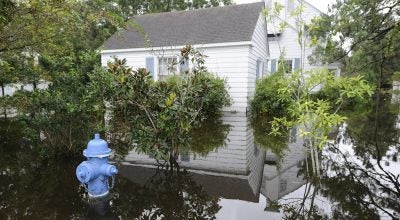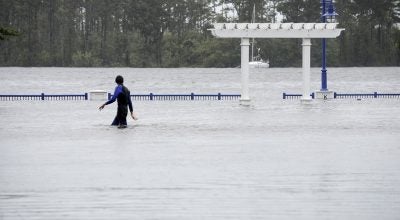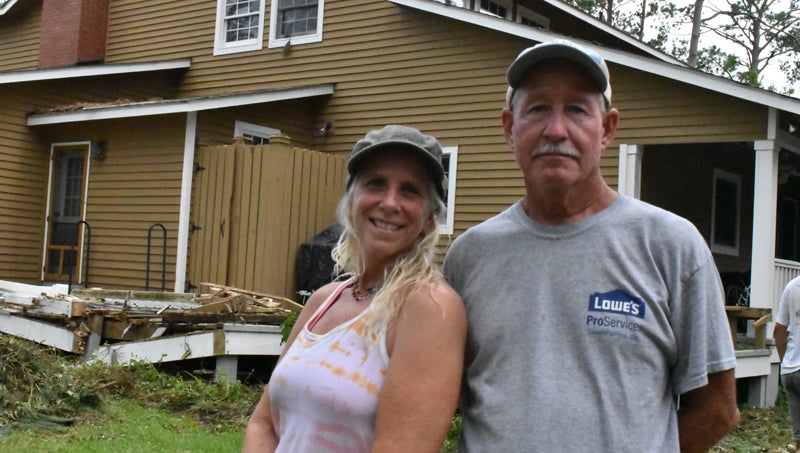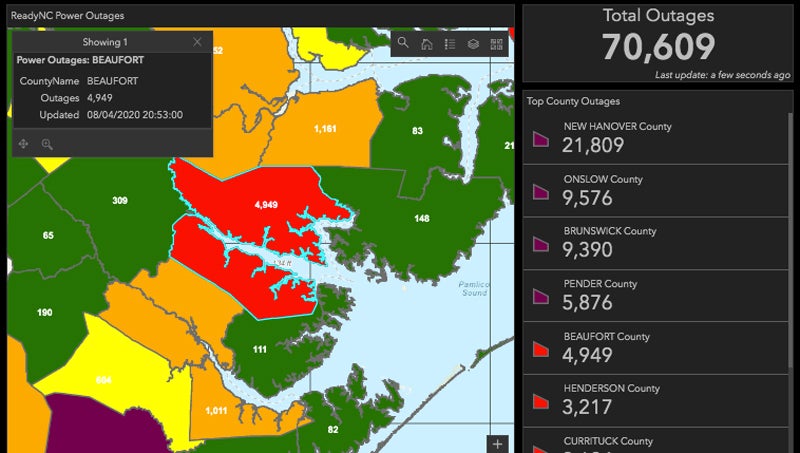Steps to protect property, before and after a storm
Published 4:21 pm Tuesday, September 3, 2019

- (Ashley Vansant/Daily News)
Aside from protecting one’s family and loved ones, taking care of one’s home during a hurricane becomes a top priority. Ready NC offers the following tips to help protect one’s home during and after a storm.
Before and during:
- Gather important paperwork, including copies of insurance policies, medical records, prescriptions, etc. Bring copies with you if you need to leave your home.
- If severe storms are coming, protect your property by covering windows with storm shutters, siding or plywood. Move vehicles into garages if you can, or park them near your home and away from trees.
- Bring bulky or heavy objects such as lawn furniture, grills, garbage cans, tools, potted plants, etc. inside. Loose objects can become missiles. Tie down anything you cannot bring indoors.
- Fill bathtubs, sinks and jugs with clean water in case regular supplies are dirty or not clean. Clean these containers by first rinsing them with bleach.
- Put sandbags or other protection in place, based on predicted flood depths. Keep sandbags away from the outside walls of your house to prevent floodwaters from reaching your house.
- Move valuable papers, jewelry and other contents to upper floors or higher levels to keep them from flood water.
- If time permits, turn off services at the main power switch and close the main gas valve. In case of flooding, do not touch any electrical equipment. Only touch it is in a dry area or you are standing on a dry piece of wood while wearing rubber-soled shoes or boots and rubber gloves.
- If you’re caught in the house by suddenly rising waters, move to the second floor or the roof. Take warm clothing, a flashlight and portable radio with you. Call 9-1-1 and wait for help. Rescue teams will look for you.
After:
- Contact your insurance company as soon as possible to file a claim and arrange a visit from an adjuster. You must do this first before you file any other claim.
- Before doing any repairs to your house, take pictures and make a list of the damage.
- Protect your home from more damage by making short-term repairs only. You need to wait until your insurance company can tell you what else you need to do. Save any receipts for items bought for repairs.
- Do not have permanent repairs made until your insurance company has inspected the property. Wait until you and the insurance company have reached an agreement on the cost of repairs.
- Rent short-term shelter if needed. If you cannot live in your home, most homeowner’s policies pay extra living expenses while your property is being fixed. Before renting short-term shelter, check with your insurance company or agent to decide what expenses the company will pay you back.
- Unless you have extra coverage with your homeowner’s policy, food lost in a power outage is probably not covered. Think about buying an endorsement to cover food losses in the future.
- Most damage to your home or nearby buildings resulting from fallen trees is covered by your homeowner’s policy. Check with your agent or company before calling the tree removal service. Tree removal costs may be covered.
- Damage to your vehicles resulting from fallen trees or debris may be covered by your auto policy if you have comprehensive coverage. Check with your agent to determine whether your vehicle is covered.
- A homeowner’s policy does not cover flooding! The only way to protect your property from flood losses is to get flood insurance from the National Flood Insurance Program. Policies must be in place for 30 days before coverage takes effect. Contact your agent for more information.
- If your insurance does not properly cover the loss of or damages to your home, you may file a claim with the Federal Emergency Management Agency. This can only happen AFTER you’ve filed your homeowner’s insurance claim.
- After filing with FEMA, and your loss is still greater, you may file with the Small Business Administration for a loan.





